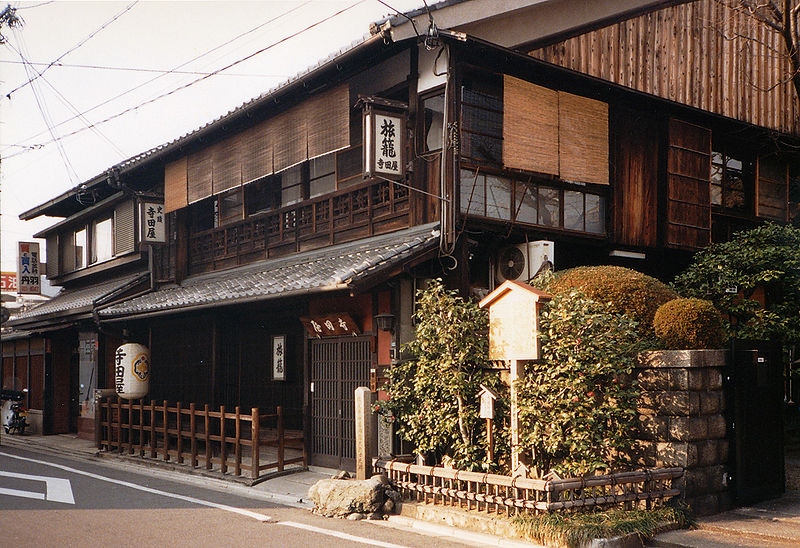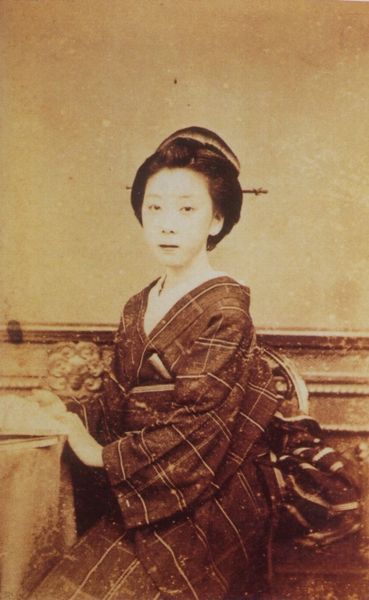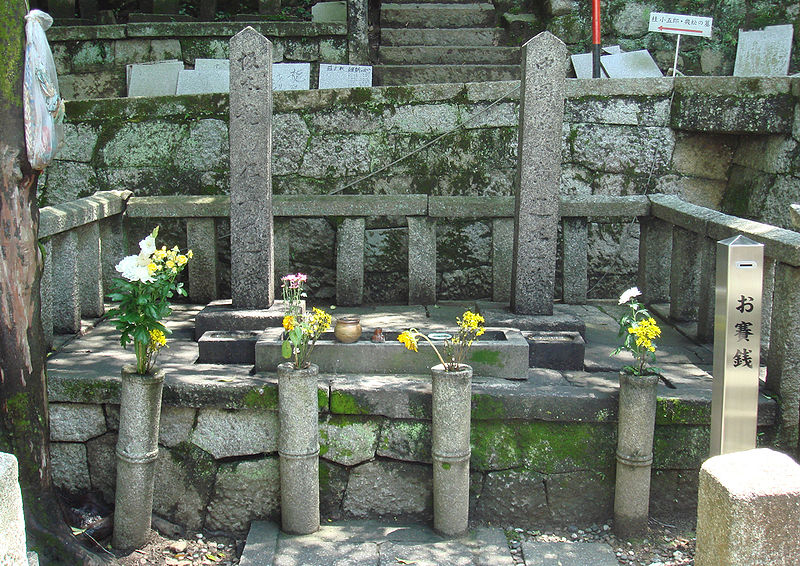<Back to Index>
- Physicist Louis Poinsot, 1777
- Director Sergio Leone, 1929
- Samurai of the Tokugawa Shogunate Sakamoto Ryōma, 1836
PAGE SPONSOR
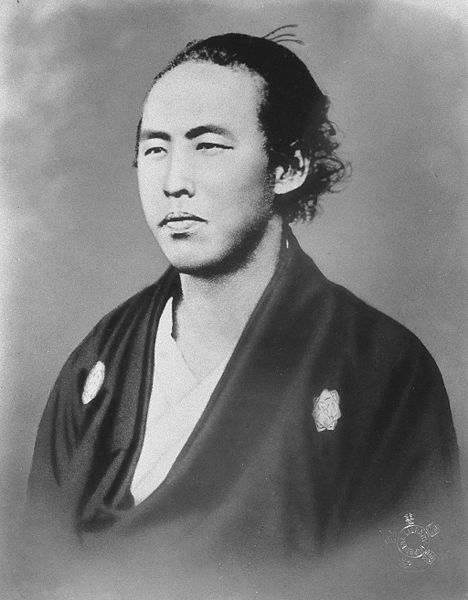
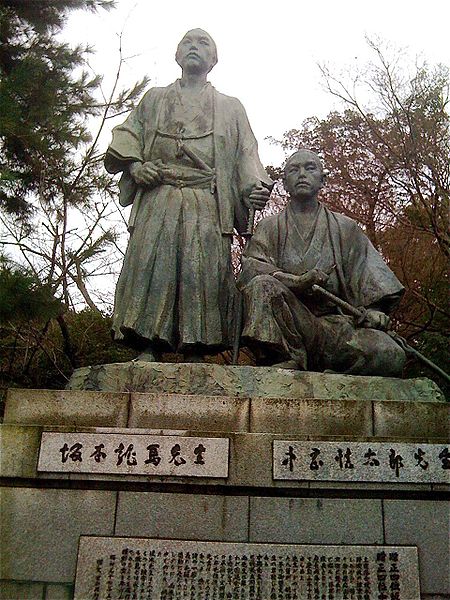
Sakamoto Ryōma (坂本 龍馬, January 3, 1836 – December 10, 1867) was a leader of the movement to overthrow the Tokugawa shogunate during the Bakumatsu period in Japan. Ryōma used the alias Saidani Umetarō (才谷 梅太郎).
Ryōma was born in Kōchi, of Tosa han (present day Kōchi Prefecture, Shikoku). By the Japanese calendar, this was the sixth year of Tenpō. His family in previous generations had acquired enough wealth as sake brewers to purchase the rank of merchant samurai, which was the lowest rank in the samurai social hierarchy. After he was bullied at school, his older sister enrolled him in a fencing school. By the time he reached adulthood he was a master swordsman. In 1853, he was in Edo as a disciple of Chiba Sadakichi, a master swordsman of the Hokushin Ittō-ryū style of kenjutsu when Commodore Perry of the United States arrived with a fleet of ships to force Japan out of its centuries old national isolation policy. Ryōma was drawn to patriotic elements within the samurai class who supported the Sonnō Jōi (‘revere the Emperor and expel the barbarians’) political philosophy. He was recruited into an anti-Tokugawa, pro-Emperor party within the Tosa domain by Takechi Hanpeita, but was forced to flee into exile as a ronin when their plot to seize control of the domain was revealed.
While a ronin, Ryōma decided to assassinate Katsu Kaishū, a high ranking official in the Tokugawa shogunate and a supporter of both modernization and westernization. However, Katsu Kaishū persuaded Ryōma of the necessity of a long term plan to increase Japan’s military strength. Instead of killing Katsu Kaishū, Ryōma started working as his assistant and protégé.
In 1864, as the Tokugawa shogunate started taking a hard line, Ryōma fled to Kagoshima in Satsuma domain, which was developing as a major centre for the anti-Tokugawa movement. Ryōma negotiated the secret alliance between Chōshū and Satsuma provinces. Satsuma and Chōshū historically had been absolute enemies, and Ryōma's position as a "neutral outsider" was critical in bridging the gap in trust.
Ryōma is often regarded as the "father of the Imperial Japanese Navy", as he worked under Katsu Kaishū's direction toward creating a modern naval force (with the aid of western powers) to enable Satsuma and Chōshū to hold their own against the naval forces of the Tokugawa shogunate. Ryōma founded the private navy and trading company Kameyama Shachū (亀山社中) in Nagasaki City by the help of Satsuma. Later Kameyama Shachū became Kaientai or Ocean Support Fleet.
Chōshū’s subsequent victory over the Tokugawa army in 1866 and the impending collapse of the Tokugawa shogunate made Ryōma a valuable commodity to his former masters in Tosa. Ryōma was recalled to Kōchi with honours. The Tosa domain was anxious to obtain a negotiated settlement between the Shogun and the Emperor, which would prevent the powerful Satchō Alliance from overthrowing the Tokugawa by force and thus emerging as a new dominant force in ruling Japan. Ryōma played a crucial role in the subsequent negotiations that led to the voluntary resignation of the Shogun Tokugawa Yoshinobu in 1867, thus bringing about the Meiji Restoration.
Ryōma was assassinated at the age of 33 (according to the old lunar calendar he was born on 15 November 1835 and killed on his birthday in 1867) at the Ōmiya (近江屋) inn in Kyoto, not long before the Meiji Restoration took place. Initial reports accused members of the Shinsengumi for Ryōma and Nakaoka Shintarō's deaths (and Shinsengumi leader Kondō Isami was allegedly executed on that pretense), but another pro-Shogun group, the Mimawarigumi's Imai Nobuo confessed to the murder in 1870. Although Sasaki Tadasaburō and Imai Nobuo carry the blame, the true assassin has never been proven in a court of law.
Ryōma was a visionary who envisioned a Japan without any
feudal trappings. He read about and was inspired by the example of the United States where "all men are created equal".
He realized that in order to compete with an industrially and
technologically advanced outside world, the Japanese people needed to
modernize. He was also seen as an interesting anomaly in his preference
for traditional samurai dress, while favoring western footwear. On 15 November 2003, the Kōchi Airport was renamed to the Kōchi Ryōma Airport in
his honor. There is a Sakamoto Ryoma Memorial Museum (坂本龍馬記念館) in
Kōchi. On 15 November 2009, Hokkaidō Sakamoto Ryōma Memorial Museum was
built in Hakodate, Hokkaidō. Asteroid 2835 Ryoma is named after him. Asteroid 5823 Oryo is named after his wife.
